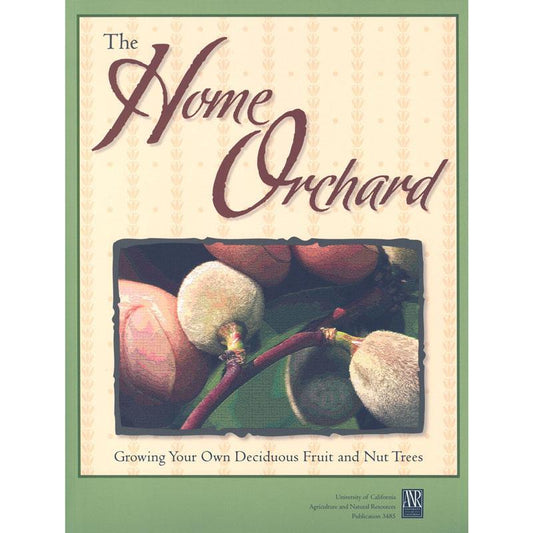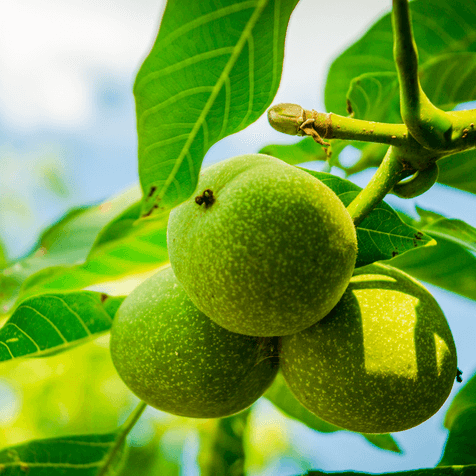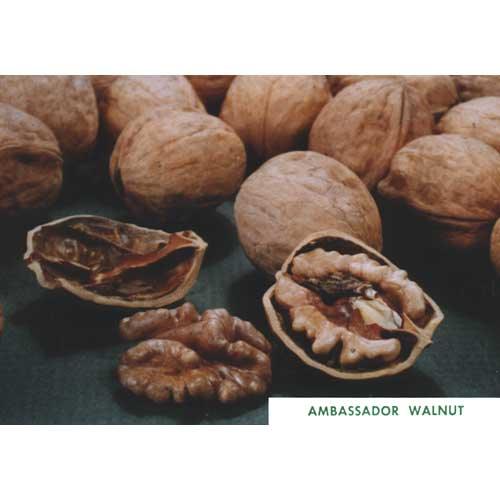Black Walnut Toxicity Explained: What Not to Plant Near a Black Walnut Tree and Best Black Walnut Companion Plants
Black walnut trees (black walnut Juglans nigra) are prized for their beautiful wood, deep shade, and delicious nuts. Yet, these iconic trees come with a secret weapon that can make gardening around them tricky — a natural compound that harms many nearby plants. Known as juglone, this chemical is responsible for juglone toxicity, which can stunt growth or even kill sensitive species.
Many gardeners wonder, "do black walnut trees kill other trees?" The answer is yes — trees and plants that are sensitive to juglone may struggle or die if planted too close. If you’ve ever noticed certain vegetables, fruits, or flowers wilting near a black walnut, this guide will explain how black walnut poison works, what not to plant near a black walnut tree, and which plants make ideal companions.

Understanding Black Walnut Tree Toxicity
The Chemical Called Juglone
The key to black walnut tree toxicity lies in a chemical called juglone (5-hydroxy-1,4-naphthoquinone). Black walnut trees produce juglone in their roots, leaves, bark, and nut hulls. It acts as a natural defense mechanism — a process known as allelopathic effects — that suppresses nearby plants’ ability to absorb oxygen during cellular respiration.
When juglone builds up in the soil, sensitive plants may wilt, turn yellow, or even die. The highest concentration of juglone is found within the tree’s root zone and up to 80 feet from the trunk. Even black walnut leaves, wood chips, or fallen husks can release juglone as they decay.
Unlike the English walnut, which contains much lower levels of juglone, black walnut trees produce enough to affect many garden species.
Do Walnut Trees Kill Other Plants?
Gardeners often ask, “Do black walnut trees kill other plants?” In a sense, yes — but not intentionally. The walnut roots release juglone into the surrounding soil, making it toxic for certain species. Over time, these allelopathic effects can limit what grows near the tree.
Because of this, it’s important to know what not to plant near a black walnut tree and instead choose black walnut companion plants that are tolerant of juglone.

What Not to Plant Near a Black Walnut Tree
Many garden favorites are sensitive to juglone. Avoid growing these within the dripline (the area under the canopy):
- Tomatoes, potatoes, peppers, and eggplants
- Apples, pears, blueberries, and blackberries
- Azaleas, rhododendrons, lilacs, hydrangeas, and yews
These species are the most susceptible plants and tend to show yellowing and stunted growth when exposed to walnut toxicity.
If you must grow them nearby, use raised beds filled with clean, juglone-free soil to create a barrier between their roots and the toxic black walnut tree.
Best Black Walnut Companion Plants
Thankfully, many species are tolerant of juglone and thrive near black walnuts. Try planting:
- Vegetables:
- Carrots, corn, beans, squash, beets, onions, melons, and parsnips.
- Trees & Shrubs:
- Elderberries, persimmon, catalpa, oak, maple, and red cedar — all make excellent black walnut companion plants.
- Perennials & Flowers:
- Sweet woodruff, Shasta daisy, hostas, coral bells, and ferns perform beautifully near walnut roots.
For even more juglone-tolerant species, explore potted trees and shrubs ideal for mixed plantings.

Managing a Garden Near Black Walnut Trees
- Use Raised Beds: Build deep raised beds to separate sensitive plants from juglone-contaminated soil.
- Clean Up Debris: Rake and remove fallen black walnut leaves and husks to prevent buildup.
- Protect from Sun Stress: If you’re gardening under partial shade, shade cloth can help regulate light levels.
- Feed Wisely: Acid-loving species grown beyond the root zone can benefit from acid-loving fertilizers.
You can also consult The Home Orchard book for detailed planting and soil-health strategies.
Conclusion
By understanding black walnut juglone and choosing plants wisely, you can enjoy the shade and beauty of your black walnut tree without sacrificing your garden’s health. For planting inspiration, browse walnut trees for sale and start planning your juglone-smart landscape today.












71 comments
Natalia, I checked the link in the article and it does not list cypresses, but I am not sure how extensive the list is. You may want to do a google search and see if you can find out any more information about the cypress.
Doug, the article that is referenced in this blog just states that peonies are sensitive. You may want to contact either your local Master Gardener or local Ag Office, they may have more information.
We may have just found out why our peonies are not growing -because they are under a black walnut tree! Your list says that some peonies may be tolerant. Can you give me some more information as to the different types of peonies? Thank You
Just had 3 aging Blue Spruce removed. Would like to put a Japanese Tree Lilac, Ivory Silk, in the space. BUT, there is a Black Walnut within 50 feet of the space with the drip line closer. Is this a yes or no to the Tree Lilac? Thanks in advance.
Theo Haasch
Carol, I have found out some information for you regarding growing milkweed or other butterfly friendly plants by a black walnut. So basically you can plant yarrow, bee balm and coneflowers by the walnuts, did not find much about milkweed. But keep in mind that milkweed likes full sun, so you would not want to plant it under the tree and that goes for the other mentioned flowers.